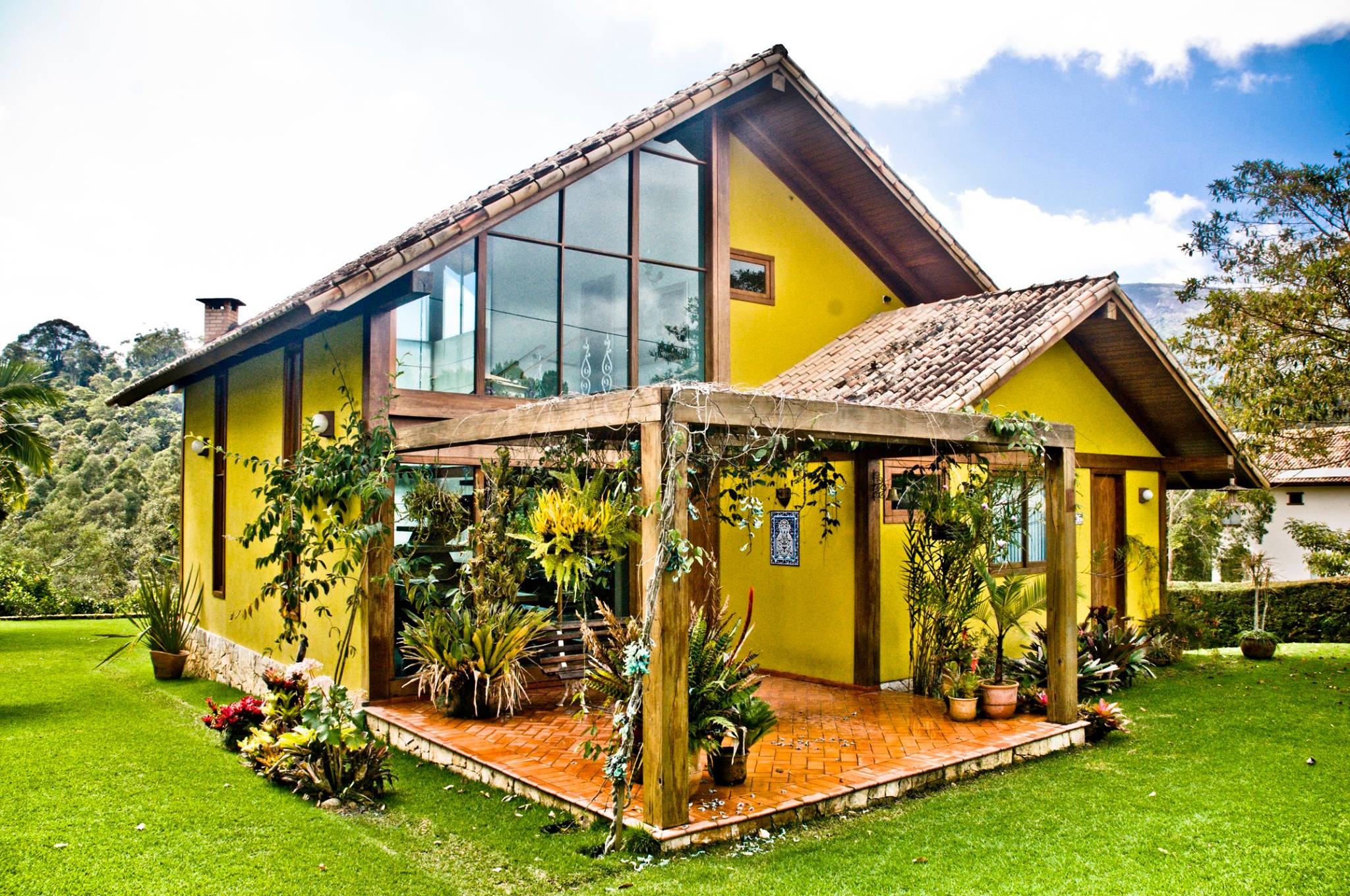Imagine this: You wake up to the sun gently streaming through your window, the air filled with the sound of birdsong. You step outside, a steaming cup of coffee in hand, and take a deep breath of fresh, crisp air. This is the allure of a casita bonita de campo – a beautiful country home that embodies the serenity and charm of rural Mexico.
Whether you dream of a sprawling hacienda or a cozy adobe cottage, casitas bonitas de campo offer a unique blend of rustic elegance and authentic Mexican living. Let’s explore what makes these homes so special, and discover the design possibilities for creating your own slice of countryside paradise.
Why Choose a Casita Bonita de Campo?
These aren’t your typical houses. Casitas bonitas de campo are full of character, each one reflecting the history, traditions, and natural beauty of its surroundings. Here are just a few reasons why they’re capturing hearts:
- Connection to Nature: Casitas bonitas de campo are designed to blend seamlessly with the natural world. Think expansive windows framing breathtaking views, sprawling verandas for soaking up the sunshine, and outdoor living spaces that invite you to dine under the stars.
- Rustic Elegance: From exposed wooden beams to hand-painted Talavera tiles, these homes celebrate the beauty of natural materials and handcrafted details.
- A Slower Pace of Life: Life in a casita bonita de campo moves at a different rhythm. It’s about waking up to the sounds of nature, spending your days exploring nearby trails, and gathering with loved ones around a crackling fireplace.
- Uniquely Yours: While certain design elements remain timeless, casitas bonitas de campo offer endless opportunities for personalization. You can create a space that reflects your own unique style and embraces the local flavor of your chosen region.
What Makes a Casita Bonita? 7 Design Essentials
1. Embracing Natural Materials
Step inside a casita bonita de campo, and you’ll be greeted by the warmth and character of natural materials. Stone, adobe, and wood are the cornerstones of these homes, creating a sense of rustic elegance that connects the structure to the surrounding landscape.
- Stone: Durable and beautiful, stone is often used for walls, foundations, fireplaces, and accents, adding a timeless appeal that only gets better with age.
- Adobe: Made from sun-dried earth, adobe brings an earthy warmth and natural insulation to casitas. Its distinctive texture adds a touch of rustic charm.
- Wood: Exposed wooden beams, handcrafted doors, and polished wood floors add warmth, character, and a sense of history to these homes.
2. Traditional Design Elements with a Twist
While modern influences are finding their way into casitas bonitas de campo, many homes embrace traditional architectural features that have stood the test of time:
- Gabled Roofs: Often featuring red clay tiles, gabled roofs are both practical and aesthetically pleasing, providing effective drainage and adding visual interest.
- Courtyards: A central courtyard, often with a fountain or lush plantings, creates a tranquil oasis within the home, offering a place to relax and connect with nature.
- Fireplaces: A focal point for gathering, fireplaces provide warmth on cool evenings and enhance the cozy ambiance of casitas.
3. A Celebration of Color
Casitas bonitas de campo are anything but bland. Vibrant colors, often inspired by the region’s natural beauty, infuse these homes with personality and charm.
- Bold Exterior Walls: Think terracotta, deep blues, sunny yellows, and earthy greens — hues that complement the surrounding landscape and create a welcoming first impression.
- Intricate Tilework: Hand-painted Talavera tiles, a hallmark of Mexican artistry, adorn floors, walls, staircases, and countertops, adding pops of color and intricate patterns.
4. Seamless Indoor-Outdoor Living
One of the most captivating aspects of casitas bonitas de campo is the seamless flow between indoor and outdoor spaces.
- Verandas and Patios: Spacious verandas, often furnished with comfortable seating, hammocks, and dining areas, become extensions of the living space, inviting you to relax and enjoy the fresh air.
- Open Floor Plans: Connecting kitchens, living rooms, and dining areas creates a sense of spaciousness and encourages a relaxed, communal atmosphere. Large windows and French doors further blur the lines between indoors and out.
5. Handcrafted Details
The beauty of casitas bonitas de campo often lies in the details. Handcrafted elements add a unique touch and celebrate Mexican artistry.
- Ironwork: Intricately designed iron gates, railings, light fixtures, and door hardware add a touch of elegance and reflect the region’s artistic heritage.
- Textiles: Woven rugs, colorful blankets, and embroidered cushions, often sourced from local artisans, bring warmth, texture, and a sense of place to casitas.
6. Personalization is Key
Casitas bonitas de campo are meant to be personalized havens that reflect the homeowner’s unique style and passions.
- Collections on Display: Display treasured souvenirs, artwork, and family heirlooms to infuse your casita with personal history and meaning.
- Creating Cozy Nooks: Tuck a reading nook into a sunny corner, set up a painting studio in a room with a view, or design a chef’s kitchen that inspires culinary adventures.
7. Sustainability in Mind
As awareness of environmental impact grows, many casitas bonitas de campo are embracing sustainable building practices and eco-friendly features.
- Solar Panels: Utilize Mexico’s abundant sunshine to power your home with clean energy.
- Rainwater Harvesting: Collect rainwater to irrigate gardens and reduce reliance on municipal water supplies.
- Local Materials: Opt for locally sourced materials to minimize transportation costs and support regional artisans.
Bringing Your Vision to Life: Building Your Dream Casita
Building a casita bonita de campo is an exciting journey, and with the right planning and resources, it can be an achievable dream.
- Finding the Perfect Location: Do you envision yourself nestled in the mountains, surrounded by rolling hills, or close to a charming village? Consider your desired lifestyle and proximity to amenities when choosing the location for your casita.
- Assembling Your Team: Partner with experienced architects and builders who specialize in traditional Mexican architecture and sustainable building practices.
- Budgeting Wisely: Factor in the cost of land, materials, labor, and permits. Working with local artisans and sourcing materials regionally can often save costs and support the local economy.
More Than a Home: Embracing the Casita Lifestyle
Owning a casita bonita de campo is about more than just a physical structure – it’s about embracing a slower pace of life and connecting with the natural world. It’s about creating a space where you can truly unwind, reconnect with loved ones, and savor the simple pleasures of life.
Imagine hosting unforgettable gatherings in your open-air courtyard, the air filled with laughter, the scent of sizzling fajitas, and the sound of traditional Mexican music. Picture yourself tending to your own garden, gathering fresh herbs and vegetables for your table.
This is the allure of the casita bonita de campo: a sanctuary, a retreat, a place to create memories that will last a lifetime.
¿Cuánto Cuesta Una Casa de Campo en México? [How Much Does a Country House Cost?]
Dreaming of your own tranquil escape? Understanding the cost of a casita de campo is an important first step. Let’s break down the factors that influence price and give you a realistic idea of the investment:
Factors That Influence the Price:
Think of it like putting together a puzzle — each piece affects the final picture:
- Size and Layout: A spacious casa with multiple bedrooms will likely cost more than a cozy one-bedroom casita.
- Construction Materials: Homes built with traditional materials like stone or handcrafted wood tend to be more expensive than those using modern materials like concrete or steel.
- Location, Location, Location: Casitas in tourist zones or near major cities generally command higher prices.
- New Build vs. Renovation: Restoring a charming old casita can be a rewarding adventure but might require a bigger budget than purchasing a newly built home.
Crunching the Numbers:
- Building Your Dream: Constructing a casita from scratch in Mexico can range from MXN 350,000 to MXN 1,200,000 on average. Remember, this cost can fluctuate based on the factors we discussed.
- Charming Existing Homes: Buying an existing casita de campo can be a more budget-friendly option, with prices generally ranging from MXN 200,000 to MXN 800,000. Again, location and condition play a significant role in determining the final price tag.
In a Nutshell:
- Building a new casita de campo: MXN 350,000 – MXN 1,200,000 (approx.)
- Purchasing an existing casita de campo: MXN 200,000 – MXN 800,000 (approx.)
Remember: These are just averages. The best approach is to research prices in your desired region and consult with local real estate professionals.
Unveiling the Architectural Tapestry: What are Country Homes Called in Mexico?
Just as the landscapes of Mexico are diverse, so are the names we give to the homes that grace the countryside. Embark on a journey through language and architecture as we explore the common names for these rural abodes:
A Mosaic of Names for Rural Retreats:
What might be called a “casita” in one village could be a “finca” in another, and a “hacienda” a little further down the road. Understanding these distinctions offers a glimpse into the rich tapestry of Mexican culture, where architecture and language intertwine.
Decoding the Most Common Terms:
- Casitas: This endearing term, often used with a warm familiarity, refers to small, cozy houses, typically inhabited by families. Picture whitewashed walls, a terracotta roof, and a small garden overflowing with flowers.
- Ranchos: When a property includes land for cultivation or livestock, it might be called a “rancho.” This term can describe anything from a family-owned farm to a larger-scale agricultural operation.
- Huertas: In some regions, “huerta” refers not just to the cultivated land but also to the house on the property. These homes are often nestled among fruit trees, vegetable gardens, and fragrant herbs.
- Haciendas: A testament to Mexico’s colonial past, haciendas are grand estates, often passed down through generations. Beyond the main house, they can encompass chapels, stables, and worker’s quarters.
Beyond Words: The Importance of Context:
While these terms offer a starting point, remember that the specific name for a country home in Mexico can vary depending on factors like:
- Size
- Building Materials
- Historical Significance
- Regional Dialects
Ultimately, it’s not always about the precise name but about the essence these dwellings capture: A connection to nature, a celebration of tradition, and a slower, more intentional way of life.
If you’re looking for a cozy and charming home, don’t miss out on our collection of casas pequeñas. These beautiful and affordable homes are perfect for those who want to live in a more sustainable and eco-friendly way. And for those who love the rustic charm of casas de madera, we have a wide selection of beautiful homes made from this natural and renewable material.
- Memorial Stones for Gardens: A Guide to Creating a Lasting Tribute - April 29, 2025
- Melon Cut Diamonds: A Comprehensive Guide - April 29, 2025
- MarketStreet Lynnfield Stores: A Complete Directory & Shopping Guide - April 29, 2025










